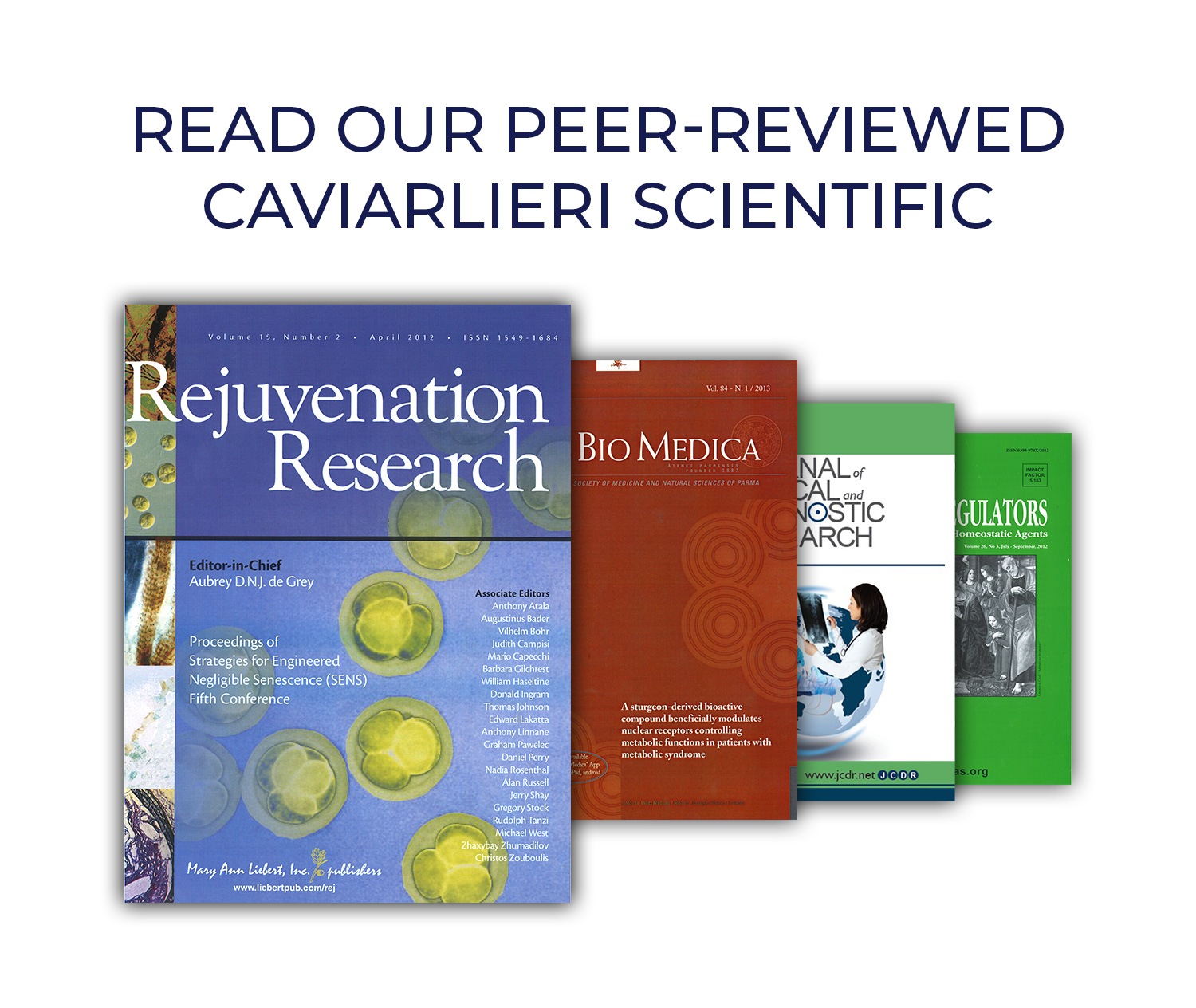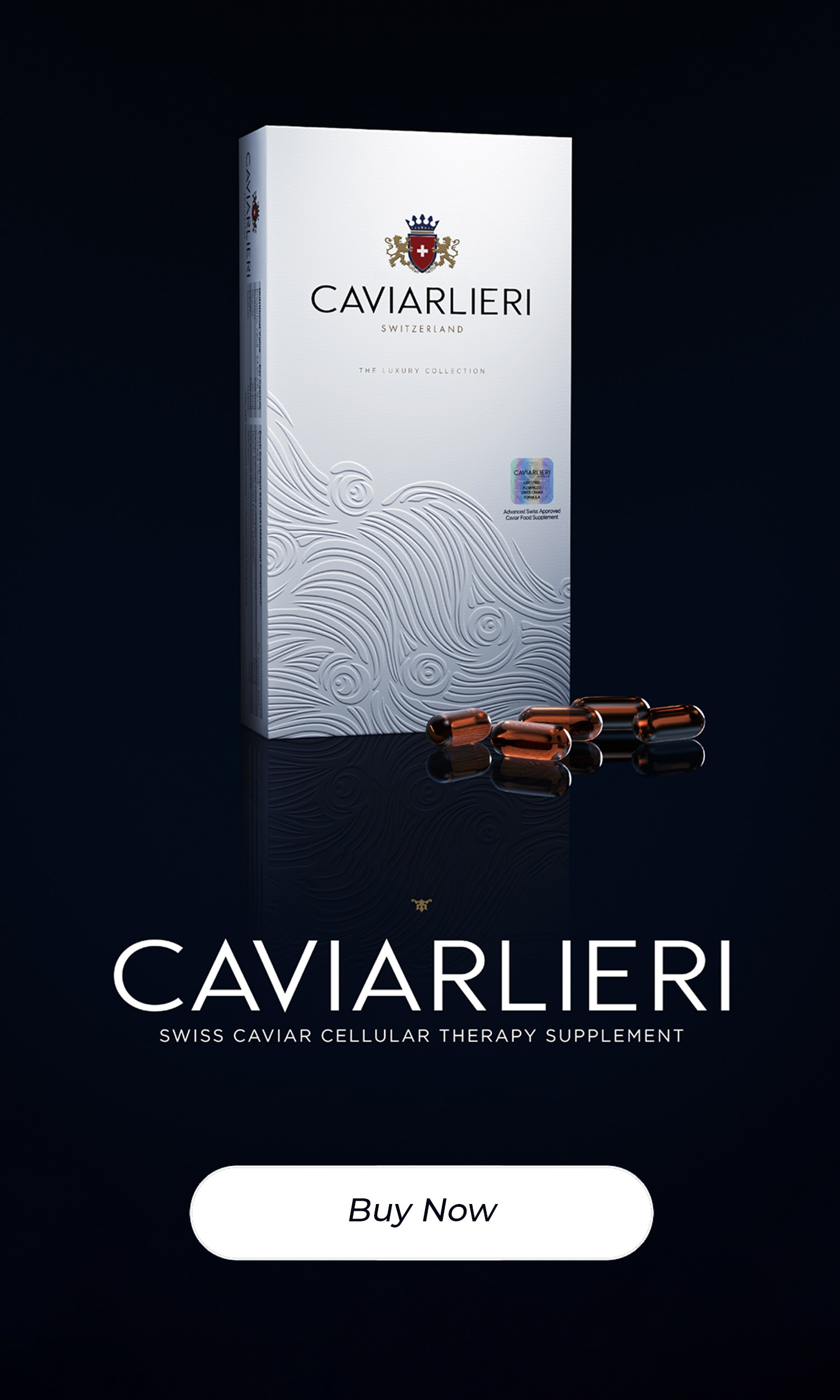Improving Fitness at a Cellular Level
Caviarlieri | Published January 20, 2020
Determined to live an active lifestyle by exercising but don’t have enough energy to get up and going? Do you feel easily exhausted before, during and after exercising and not being able to fully recover away from physical exertion? Is your sexual performance and stamina compromised? Poor stamina and endurance that almost feels debilitating?
With just one capsule a day of Caviarlieri (caviar supplement), you will experience a significant change in your fitness capabilities. With its Swiss Proprietary Cold Extraction Technology, “Cellularix,” Caviarlieri delivers its active micronutrients directly into the cells, boosting your body to reproduce new cells that has been lost or damaged on a constant basis. Cellular therapy triggers the body’s ability to heal itself. It not only means healing from an injury or illness, but it really is the healing and replenishing of new cells to sustain the energy levels. Cellular therapy allows older people to feel physically able as they were in their youth.
Now let’s tap into what age and lifestyle can do to our fitness levels. As physical fitness is the ingredient to a long life and good health, it is important that we stay active and physically fit as we grow older. But in order to set a realistic fitness goal, it is crucial to know how specifically strong your body is.
How to Access Your Fitness Levels
The main focus areas are..
- Cardio Fitness – At resting point, a healthy heart rate is between 60 to 100 beats per minute. To calculate your target heart rate zone in order to give your heart and lungs a good workout is by increasing the heart rate by 50 to 75 percent of the maximum heart rate for your age. This table shows you an example of a good heart rate zone to reach when working out.
| Age | Target heart rate zone: Beats a minute |
Maximum heart rate: Beats a minute |
| 25 | 98-146 | 195 |
| 35 | 93-138 | 185 |
| 45 | 88-131 | 175 |
| 55 | 83-123 | 165 |
| 65 | 78-116 | 155 |
- Muscular strength and endurance – This can be easily assessed by doing push-ups or sit-ups. The table below is an amount of push-ups done continuously that is considered a healthy fitness level for each gender. The target number can also be counted as a goal to reach, if you do not.
| Age | Women | Men |
| 25 | 20 | 28 |
| 35 | 19 | 21 |
| 45 | 14 | 16 |
| 55 | 10 | 12 |
| 65 | 10 | 11 |
- Flexibility – A simple way in measuring your flexibility is the sit and reach stretch. With this test, it will assess the flexibility in your lower back, hips, and the back of your legs. This can easily be done by placing a measuring tape on the floor and secure it with a piece of tape on the 15 inch mark. Place your soles evenly with the mark and slowly exhale as your reach forward. You might have to do this a couple of times to wake up your muscles. Record each reaches. The indicator for good flexibility are as below.
| Age | Women furthest reach | Men furthest reach |
| 25 | 21.5 in. (55 cm) | 19.5 in. (50 cm) |
| 35 | 20.5 in. (52 cm) | 18.5 in. (47 cm) |
| 45 | 20 in. (51 cm) | 17.5 in. (44 cm) |
| 55 | 19 in. (48 cm) | 16.5 in. (42 cm) |
| 65 | 17.5 in. (44 cm) | 15.5 in. (39 cm) |
- Body Composition – Body composition is your BMI or Body mass index and your Hip waist ratio. You will have a higher risk of heart diseases and type 2 diabetes if you carry more weight above your hips. The risk is even greater for women with a waist circumference more than 35 inches, and 40 inches for men. Your BMI is the calculation of your body fat. This can effortly be done by using an online BMI calculator. A healthy weight result should be as below..
| BMI | Weight Result |
| Below 18.5 | Underweight |
| 18.5-24.9 | Normal weight |
| 25.0-29.9 | Overweight |
| 30 and above | Obesity |
However, if do not meet the above results, it is still ok as long as you use them as a goal to work towards to, and continuously monitor your progress. With supplements such as Caviarlieri, you will see a difference moving forward much quicker. Caviarlieri works because it provides nutrition at cellular levels which trigger protein synthesis. Only with protein synthesis, cellular renewal and repair against damaged cells will be stimulated, improving cellular energy.
Caviarlieri (caviar supplement) is not just your typical nutritional supplement. It also works wonders on your physical condition and overall vitality, making you not only look but also feel younger. It is a potent non-injectable bio-active micronutrient supplement that has the qualities to support a significant increase in cellular energy
- Promotes energy and vitality for optimal life and work
- Increases Recuperation from physical exercise
- Caviarlieri is not an energy drink or supplement, whether a cellular treatment that restores energy back into your cells
- Aids in a speedy recovery from physical exercise
- Prolongs stamina and endurance
- Helps you go faster and longer
- Enhances sexual performance
Caviarlieri is made-up from four key ingredients that combats fatigue and promotes energy levels. More importantly, Caviarlieri contains potent bioactive ingredients which helps alleviates metabolic syndrome.
- Sturgeon Caviar and Marine peptides
It’s key ingredient is a proprietary Cellular Caviar and Marine Complex extracted from sturgeon eggs and deep marine sea fish which can trigger reparation and rejuvenation of damaged cells. Other beneficial ingredients include marine collagen which helps to reinforce elasticity of the skin and plays an extremely important role in the rejuvenation of cartilage.
- Collagen maintains an indispensable Amino Acid Balance
Marine Collagen is 97% protein with zero fat, sugar, or carbohydrates. It is extremely unique to other forms of protein due to its amino acid profile. Having a functional Collagen peptide as part of your daily diet has been proven to be an adequate substitution in a high-quality protein diet. It helps improve recovery and muscle building workouts.
- CoQ10 on Fatigue and heart failure
CoQ10 plays several key roles in your body. It is a compound found in the mitochondria of your cells. Patients with chronic fatigue syndrome have been associated with abnormally low levels of CoQ10 in their plasma and muscle tissue. CoQ10 lowers the oxidative stress that affects your energy. Low levels of CoQ10 has also been proven as a predictor of chronic heart failure as it helps with heart function.
- Selenium on metabolic syndrome
Metabolic syndrome is a medical term for a collection of conditions that occur together – diabetes, high blood pressure and obesity. Selenium is an essential mineral that helps your overall health if taken in the right amount. It is a powerful antioxidant that keeps your oxidative stress in check, while also enhances your immune system. Furthermore, it lowers inflammation which reduces the risk of metabolic syndrome.
Because staying active is always better for your longevity. Health is wealth and with regular activity you will be lowering the risks of…
- Heart attacks
- Obesity
- High cholesterol levels
- High blood pressure
- Type 2 diabetes
- Some cancer
- Bone and muscle disorders
It simply gives you that feel good feeling. Better energy, better mood, and better sleep.
In conclusion, Caviarlieri gives a tremendous promise on your overall vitality and energy. Using its Swiss Proprietary Cold Extraction Technology to deliver a potent amount of peptides into your body with maximum absorption, it helps improve your fitness at a cellular level, like no other supplement can.
Subject
Recent Posts
-
The Amazing Benefits of Highly Polymerized Fish Collagen Peptides with Elastin – Caviarlieri
-
The World’s Most Effective Caviar DNA Extract with Marine Bioactive Peptides
-
Are Supplements effective for Joint Pain?
-
Why Is Sustainable Immunity Important for Your Long-Term Health
-
What is your “Body Age” – Biological Age?




